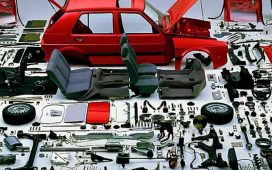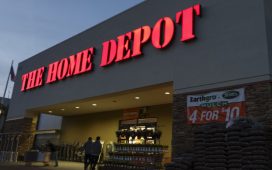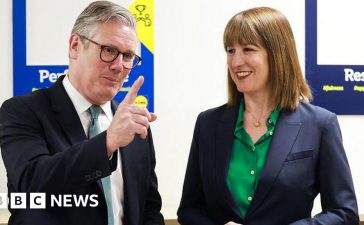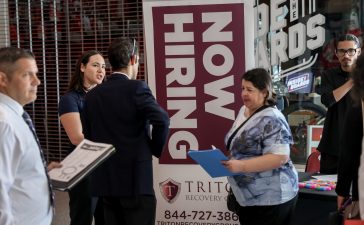That said — and I say this with a mixture of humility and concern — the Sahm rule is still relevant. The risk of a recession is elevated, strengthening the case for the US Federal Reserve to cut interest rates.
The National Bureau of Economic Research defines a recession as a “significant decline in economic activity that is spread across the economy and that lasts more than a few months.” The NBER makes its official determination several months after assessing a range of economic data. Right now, most of the data that the NBER considers look solid. For example, real consumer spending rose 2.6% at an annual rate in the second quarter, and monthly payroll gains averaged 170,000 in the past three months. A notable exception was employment as measured by the household survey, which is basically flat this year.
Still, while the economy is growing less quickly, it is growing. There is no recession, at least not yet.
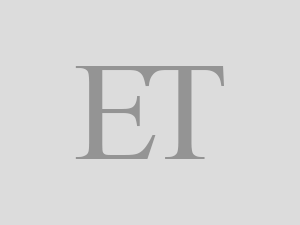 Bloomberg
BloombergBut conditions can change quickly, and by the time the NBER has officially designated a recession, it is usually too late to guide policymakers. The purpose of the Sahm rule is to act as a kind of early diagnosis. I created it in early 2019 to shorten the wait time on the NBER and act as an automatic trigger for fiscal policy, such as stimulus checks, in a downturn.This rule, later named after me, is simple and highly accurate (historically) by design: When the three-month average of the US unemployment rate is 0.50 percentage point or more above the low of the prior 12 months, the US is already in a recession. Since 1970, the rule correctly indicates every recession and does not trigger outside of one (although 1976 was a close call). In 1959 and 1969, the Sahm rule was triggered outside of a recession, but a recession followed within six months.And yet, as any investment prospectus will tell you: Past performance is no indication of future results.The Sahm rule relies on a powerful feedback loop: Relatively small increases in the unemployment rate can turn into large ones. Workers without paychecks weigh on consumer demand, leading to more workers without paychecks. A rising unemployment rate also affects more than just the unemployed, since it normally coincides with fewer raises and job opportunities, as well as heightened uncertainty overall.
In US recessions from 1947 to 2007-09, the unemployment rate rose gradually in the early months and then increased substantially. On average, the peak unemployment rate is almost 3 percentage points above the pre-recession level. The increase in the unemployment rate over the past year fits within the range of earlier recessions.
The level of unemployment is not decisive — it’s the change that matters most. The US entered the 1969-70 recession with an unemployment rate of about 3.5%, for example, and the 1981-82 with it more than 7%. Over longer periods, changing demographics affect the overall unemployment rate. The Congressional Budget Office estimates that the equilibrium rate peaked at over 6% in the late 1970s and slowly fell to 4% last year, partly reflecting an aging, more experienced workforce. Focusing on changes over shorter horizons, like a year, makes recessions more comparable.
Which brings us back to Friday’s jobs report. The rise in the unemployment rate in July to 4.3% brought the Sahm rule to 0.53 — just above its trigger. Even so, there is good reason to view the current rise in the unemployment rate as overstating the recessionary dynamics.
Last fall, when the unemployment rate began to rise, and again this spring, as it rose notably in several states, I explained that things might be different this time — that is, why the Sahm rule might not be an indicator the US was in a recession. The increase in the labor force, particularly the surge in immigration, would contribute substantially to the rise in unemployment.
A rise in the unemployment rate due to weakening demand for workers gains momentum in recessions, which is why the Sahm rule has worked well historically. But a rise in the unemployment rate due to an increase in the supply of workers is different. The rate will decrease once the jobs “catch up” with the new job seekers and more workers allow the economy to grow more. The Sahm rule does not distinguish between these two dynamics, and can look more ominous when the labor force is expanding rapidly.
There are signs that stronger labor supply, not just weaker labor demand, helped push the Sahm rule past its 0.50 percentage point threshold. Unemployed entrants to the labor force (new or returning) accounted for about half of the increase. That’s a notably higher share than in recent recessions, when most of the contribution came from unemployed workers who had been laid off temporarily or permanently. The current Sahm rule reading is likely overstating the weakening in demand and not at recessionary levels.
Even so, there are risks. Recessions have occurred while the labor force is expanding, as in the 1970s, so the current episode would not be a historical outlier for the early stages of recessions. And the hiring rate is now back down to its 2014 levels, when the unemployment rate was 6%. Some of the contributions to the Sahm rule from entrants may also reflect less demand. The layoff rate often rises later in recessions.
Fed Chair Jerome Powell said last week that the data show “an ongoing, gradual normalization of labor market conditions.” And yet the rise in the unemployment rate over the past year, which my rule reflects, now looks like we are past normal and uncomfortably close to recession. It’s time for the Fed to use its own tools and reduce interest rates.

